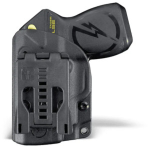Get long-range protection with TASER devices from TBOTECH—civilian tasers built for self-defense. Unlike stun guns, TASERs shoot darts up to 15 feet, stopping threats from a distance. Shop our 2025 lineup—powerful, legal options for your safety!
Top TASER Picks
- TASER Pulse 2 – 15-ft range, laser aim—compact power for civilians.
- TASER StrikeLight 2 – Stun gun + flashlight combo—versatile defense.
- TASER Bolt 2 – 15-ft range, easy grip—ideal for home or carry.
Why TBOTECH TASER Devices?
- Long-Range Defense: Shoots 15 feet—safer than contact stun guns.
- Civilian-Ready: Legal for non-police use—no permit in most states.
- Pro Features: Laser targeting, bright flashlights—precision and power.
- Vs. Police TASERs: Civilian models (e.g., Pulse 2, TASER 7) are lighter, cheaper than law enforcement versions.
Perfect For: Home defense, night safety, or keeping threats at bay.
Shop TASER Devices
Browse the best civilian tasers for 2025:
- Price Range: From $399—see TASER Pricing.
- Fast Shipping: Order today!
More Self-Defense Options
Stay safe—shop TBOTECH TASERs now!



